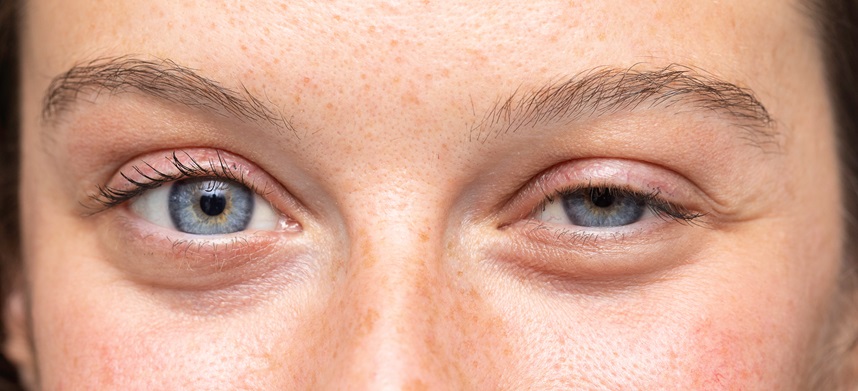Eyelids – divided into upper and lower, cover the front surface of the eye and perform important functions – a mechanical/protective barrier, clears the cornea during blinking, acts as tear drainage, and participates in facial expression. The eyelids consist of many different tissues: thin skin, dermis, cartilage, muscles, blood vessels and nerves, covered by the conjunctiva from the inside, they are rich in glands), so there are various disorders.
Swelling of the eyelids (lat. oedema palpebrae) does not necessarily reflect local pathology but can express other diseases or the first signal about them. Since the eyelids are on the face, patients notice their changes quickly enough and turn to eye doctors first. Edema of the eyelids can be divided into two main groups: inflammatory and non-inflammatory swellings.
Inflammatory causes of eyelid swelling:
- Inflammation of the eyelids (barley, abscess/abscess, rosacea, etc.);
- inflammation of the lacrimal apparatus (lacrimal glands, lacrimal sac);
- conjunctivitis/inflammation of the conjunctiva;
- inflammation of the cornea;
- inflammation of the eyeball (panophthalmitis, etc.);
- eye sockets (phlegmon, tendinitis, inflammation of the periosteum, etc.);
- with acute sinusitis;
- inflammation of the surrounding facial tissues.
Symptoms of eyelid swelling (in addition to swelling of the eyelid, other symptoms may accompany it, depending on the cause):
- eye irritation, itching, redness;
- fear of light;
- increased lacrimation;
- deterioration of vision;
- redness, dryness, flaking of the skin of the eyelids;
- various types of discharge from the eye;
- pain;
Non-inflammatory causes of eyelid swelling
- Congestive swelling occurs when there is an obstruction in the local or orbital circulation or lymphatic circulation – the drainage of blood or lymph from the eyelids is impaired. Drainage in the veins of the eyelids can be impaired in the case of prolonged blepharospasm (strong closing of the eyes), and in the veins of the eye sockets – in the case of thrombosis of the canine eye. In case of chronic diseases of the paranasal sinuses or in the presence of scarring in the eyelids, swelling (usually of the eyelid/s of one eye) may occur due to impaired lymphatic drainage.
Edema eyelids, bluish skin, visible venous dilatation and increased tortuosity.
- Swelling of the eyelids in other diseases, when fluids are retained in the body (kidney, cardiovascular system, liver, myxedema, trichinosis).
The eyelids are edematous, soft, and painless; the skin has a bluish reflection. Reversible swelling of the eyelids may occur in trichinellosis.
- Angioedema (lat. oedema Quincke) — swelling occurring due to increased blood vessel permeability, usually associated with hypersensitivity reactions. Factors causing swelling can be very diverse: food allergens, insect bites, trauma or medications.
Swelling occurs rapidly, usually bilaterally, but asymmetrically. The patient may feel increased sensitivity at the site of edema and mild itching if the airways are blocked – shortness of breath may occur.
- Allergic dermatitis. It occurs when the body is in contact with a sensitive substance, such as medications (atropine, antibiotics, vitamin drops, etc.) or chemicals.
The eyelids are edematous, pink, and itchy; small watery blisters may appear on the surface, and swelling of the conjunctiva and nasal mucosa may also occur.
